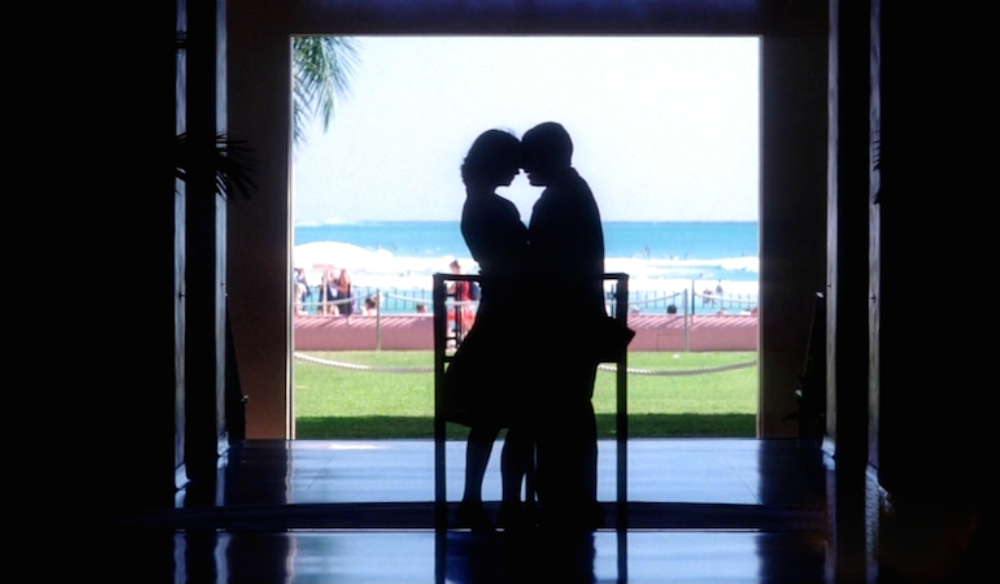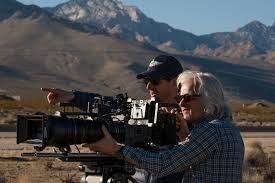Gen Z has revolutionized the world of filmmaking, bringing fresh perspectives, innovative techniques, and a keen eye for detail. In an industry where budgets can often be a constraint, Gen Z filmmakers are mastering the art of creating visually stunning films without breaking the bank. They have embraced digital technology and social media platforms, making filmmaking more accessible than ever. With an abundance of online resources and affordable equipment, the next generation of filmmakers can achieve professional-quality results while staying within their budget. This democratization of filmmaking allows aspiring directors, cinematographers, and editors to hone their craft and share their stories with a global audience, making it possible to achieve impressive training outcomes without excessive financial strain. Follow us here at Encopresis Elimination Disorder
Share this Resource
Before diving into the intricacies of Gen Z filmmaking techniques, it's essential to recognize the power of sharing knowledge. The filmmaking community thrives on collaboration and the exchange of ideas, and Gen Z is particularly adept at leveraging social media and online platforms to spread valuable insights. By sharing resources, tutorials, and personal experiences, Gen Z filmmakers are building a supportive network where everyone can learn, grow, and refine their skills. This culture of sharing not only fosters creativity but also ensures that the art of filmmaking continues to evolve. So, as you explore the techniques outlined in this article, remember to share what you learn with others, contributing to a vibrant and collaborative filmmaking community.
Top Filmmaking Techniques

The art of filmmaking is a complex and multifaceted process that requires a deep understanding of various techniques. Gen Z filmmakers are pushing the boundaries of traditional methods, incorporating new technologies, and experimenting with unique approaches to storytelling. Below, we will delve into some of the top filmmaking techniques that have become essential tools in the arsenal of any aspiring Gen Z filmmaker.
The Power of the Frame, Composition Techniques
Composition is one of the most critical elements in filmmaking, and Gen Z filmmakers are acutely aware of its power. The arrangement of visual elements within the frame can drastically affect the viewer's perception of a scene. By mastering composition techniques such as leading lines, symmetry, and framing, filmmakers can guide the audience's eye and emphasize key aspects of the story. The use of negative space, for example, can create a sense of isolation or tension, while balanced compositions can convey harmony. Understanding how to manipulate the frame allows filmmakers to enhance the emotional impact of their scenes, making composition a fundamental aspect of visual storytelling.
Cinematography Techniques and Tips

Lighting is the lifeblood of cinematography, and Gen Z filmmakers are adept at using it to set the mood, highlight characters, and create depth within a scene. Whether shooting with natural light or artificial sources, understanding how light interacts with subjects is crucial. Techniques such as three-point lighting, where the subject is illuminated from multiple angles, can help create a well-defined image with a sense of dimension. Gen Z filmmakers are also experimenting with unconventional lighting setups, such as using colored gels or practical lights, to add a unique visual flair. Proper lighting can transform a flat image into something dynamic and engaging, making it an indispensable skill in the filmmaker's toolkit.
The Moving Camera: Dynamic Shots and Movement
Static shots can be powerful, but the addition of camera movement can bring a scene to life. Gen Z filmmakers are exploring dynamic shots that add energy and excitement to their films. Whether it's a smooth dolly shot that follows a character or a handheld camera that captures the raw emotion of a moment, movement can convey action, emotion, and tension. Techniques like the "dolly zoom," where the camera moves closer while zooming out, can create a disorienting effect, drawing the viewer deeper into the story. Mastering camera movement is essential for any filmmaker looking to create a dynamic and visually engaging narrative.
Sound Design: More Than Just Dialogue
Sound design is often an underappreciated aspect of filmmaking, but Gen Z filmmakers understand its significance. Beyond just recording dialogue, sound design encompasses the creation of sound effects, ambient noise, and even silence to enhance the storytelling experience. A well-crafted soundscape can transport the audience to a different world, evoke emotions, and heighten tension. Techniques like layering multiple sound effects or manipulating audio in post-production can add depth and realism to a scene. In the hands of a skilled filmmaker, sound design becomes a powerful tool that can elevate the film's impact.
The Art of Editing: Cutting and Transitioning
Editing is where the magic of filmmaking truly comes together. Gen Z filmmakers are particularly skilled at using editing techniques to shape the narrative, control pacing, and create seamless transitions between scenes. Techniques like jump cuts, match cuts, and cross-cutting can be used to create rhythm and maintain the audience's engagement. The timing of cuts can convey a sense of urgency or allow a moment to breathe. Gen Z filmmakers are also experimenting with non-linear editing, where scenes are presented out of chronological order, to create more complex and intriguing narratives. Editing is not just about putting scenes together; it's about crafting the flow and emotional journey of the film.
Special Effects: Beyond Reality
In an age where visual effects are more accessible than ever, Gen Z filmmakers are harnessing the power of special effects to push the boundaries of what is possible on screen. From subtle enhancements like removing unwanted elements to creating entire worlds from scratch, special effects can add a layer of wonder and imagination to a film. With software like Adobe After Effects and Blender becoming increasingly user-friendly, filmmakers can experiment with CGI, compositing, and other techniques to bring their visions to life. Special effects allow filmmakers to transcend the limitations of reality and create visually stunning and otherworldly experiences.
Production Design: Setting the Scene
Production design plays a pivotal role in creating the visual identity of a film. Gen Z filmmakers are paying close attention to the design of sets, props, and costumes to ensure that every element contributes to the story. A well-designed set can convey the time period, location, and even the emotional state of the characters. Attention to detail in production design can immerse the audience in the film's world, making it feel authentic and lived-in. By collaborating closely with production designers, Gen Z filmmakers can create environments that enhance the narrative and leave a lasting impression on the audience.
Color Grading: Setting the Mood
Color grading is a powerful tool that Gen Z filmmakers are using to enhance the visual style of their films. By adjusting the colors in post-production, filmmakers can set the mood, highlight specific emotions, and create a cohesive look throughout the film. Warm tones might be used to convey nostalgia or romance, while cool tones can evoke feelings of isolation or detachment. The choice of color palette can also reinforce the themes of the film, making color grading an essential aspect of visual storytelling. With the right color grading techniques, Gen Z filmmakers can create a distinct and memorable visual experience.
The Magic of Music: Score and Soundtrack
Music has the power to elevate a film from good to unforgettable, and Gen Z filmmakers are keenly aware of this. Whether it's an original score or a carefully curated soundtrack, music sets the emotional tone and enhances the storytelling. The right piece of music can underscore a character's journey, heighten the tension in a scene, or provide a sense of closure. Gen Z filmmakers are exploring a wide range of musical genres and collaborating with composers to create scores that resonate with their audience. Music is not just an afterthought; it's an integral part of the filmmaking process that can leave a lasting impact.
Acting and Directing: Extracting the Best Performance
Directing actors is both an art and a science, and Gen Z filmmakers are learning how to extract the best performances from their cast. Understanding the nuances of performance and knowing how to communicate effectively with actors is crucial. Techniques such as improvisation, rehearsals, and one-on-one coaching can help actors deliver authentic and emotionally resonant performances. Gen Z filmmakers are also exploring collaborative approaches, allowing actors to contribute to character development and scene interpretation. By fostering a supportive and creative environment on set, directors can inspire actors to bring their characters to life in ways that are both compelling and believable.
Scriptwriting: The Blueprint of the Film
At the heart of every great film is a well-crafted script, and Gen Z filmmakers are honing their skills in scriptwriting to ensure that their stories resonate with audiences. The script is the blueprint of the film, outlining the dialogue, action, and structure of the narrative. Gen Z filmmakers are experimenting with non-traditional storytelling methods, such as nonlinear narratives, multiple perspectives, and interactive elements, to create fresh and engaging stories. Understanding character development, plot structure, and pacing are essential to crafting a script that will translate effectively on screen. A strong script is the foundation upon which a successful film is built.
Power of the Close-Up
The close-up shot is a powerful filmmaking technique that Gen Z filmmakers are using to capture the subtle nuances of a character's emotions. By focusing on a character's face, hands, or other details, close-ups can convey intimacy, vulnerability, and intensity. This technique allows the audience to connect with the characters on a deeper level, as they witness the raw emotions that drive the story. The close-up is not just about getting physically closer to the subject; it's about revealing the inner world of the characters and drawing the audience into their emotional journey.
The Rule of Thirds in Cinematography
The rule of thirds is a fundamental principle of composition that Gen Z filmmakers are mastering to create visually appealing and balanced shots. By dividing the frame into a grid of nine equal parts, filmmakers can position key elements along the lines or at the intersections, creating a sense of harmony and focus. This technique can guide the viewer's eye to the most important parts of the scene and create a more dynamic composition. The rule of thirds is a simple yet powerful tool that can elevate the visual impact of a film, making it a must-know technique for any aspiring filmmaker.